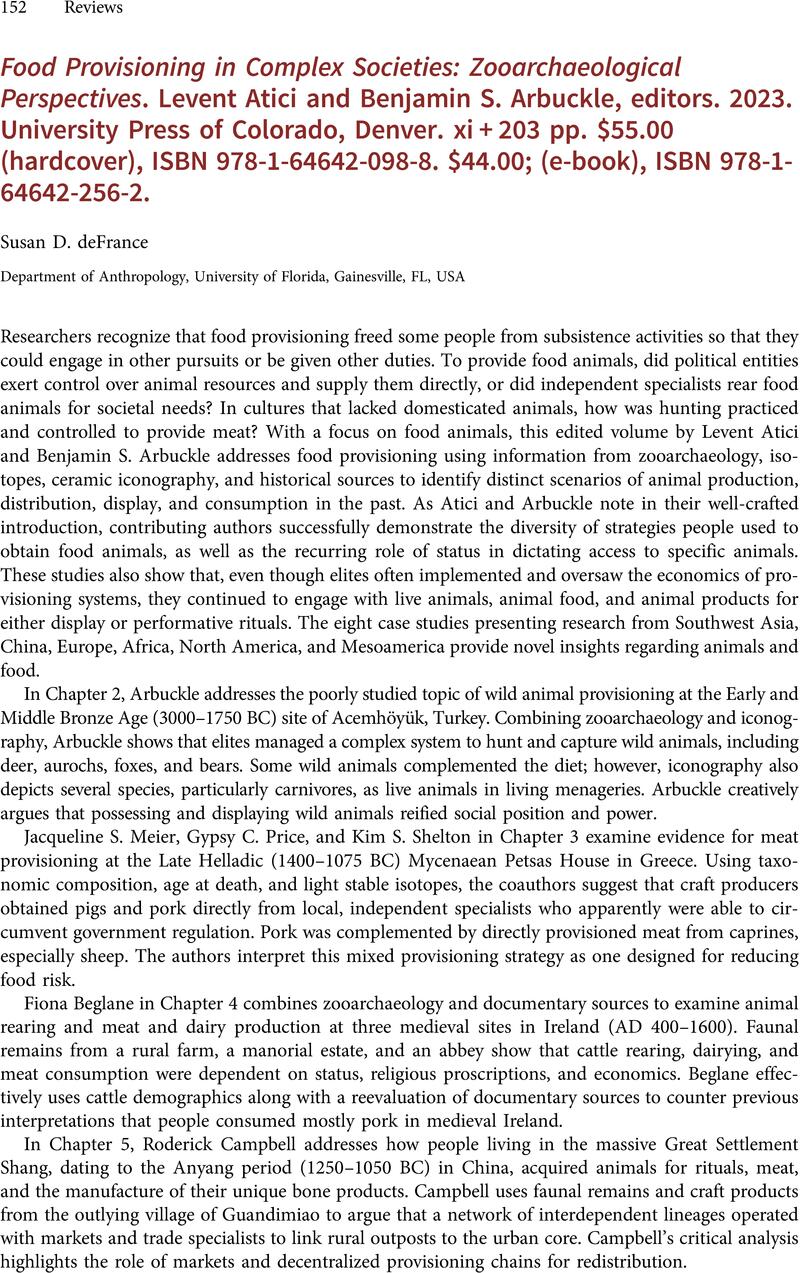No CrossRef data available.
Article contents
Food Provisioning in Complex Societies: Zooarchaeological Perspectives. Levent Atici and Benjamin S. Arbuckle, editors. 2023. University Press of Colorado, Denver. xi + 203 pp. $55.00 (hardcover), ISBN 978-1-64642-098-8. $44.00; (e-book), ISBN 978-1-64642-256-2.
Review products
Food Provisioning in Complex Societies: Zooarchaeological Perspectives. Levent Atici and Benjamin S. Arbuckle, editors. 2023. University Press of Colorado, Denver. xi + 203 pp. $55.00 (hardcover), ISBN 978-1-64642-098-8. $44.00; (e-book), ISBN 978-1-64642-256-2.
Published online by Cambridge University Press: 26 October 2023
Abstract
An abstract is not available for this content so a preview has been provided. Please use the Get access link above for information on how to access this content.

- Type
- Review
- Information
- Copyright
- Copyright © The Author(s), 2023. Published by Cambridge University Press on behalf of the Society for American Archaeology


